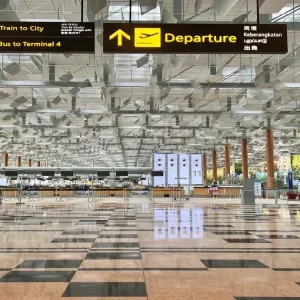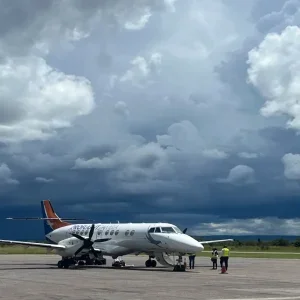
In an age where information travels at the speed of light, the airport sector faces unique challenges in dealing with misinformation and disinformation. These issues can severely disrupt operations, damage reputations, and compromise passenger safety. As airports are complex hubs of activity involving numerous stakeholders, the dissemination of false information can have far-reaching consequences. This article delves into the nature of misinformation and disinformation in the airport sector, examines their impact, and explores strategies for mitigating these risks.
Understanding Misinformation and Disinformation
Misinformation refers to the spread of false or inaccurate information without the intent to deceive. In contrast, disinformation involves the deliberate dissemination of false information with the intent to mislead. Both phenomena can arise from various sources, including social media, traditional media, and even internal communications within airport operations.
Sources of Misinformation and Disinformation in Airports
- Social Media: Platforms like Twitter, Facebook, and Instagram are fertile grounds for the rapid spread of false information. A tweet about a security threat or flight delay can quickly go viral, causing unnecessary panic.
- Traditional Media: Inaccurate reporting by news outlets can also contribute to misinformation. This might occur due to miscommunication, lack of verification, or sensationalism.
- Internal Miscommunication: Within the airport ecosystem, miscommunication between different departments—such as security, airline staff, and ground services—can lead to the spread of incorrect information.
- Cyber Attacks: Disinformation campaigns orchestrated by malicious actors can target airport information systems, aiming to disrupt operations and cause confusion.
Impact on Airport Operations
Operational Disruptions
False information about security threats, flight cancellations, or changes in procedures can lead to significant operational disruptions. For instance, a rumour about a bomb threat can result in evacuations, delays, and increased security measures, all of which affect airport efficiency and passenger experience.
Reputational Damage
Airports rely heavily on public trust. Misinformation or disinformation can damage this trust, leading to a tarnished reputation. For example, false claims about safety violations or poor service quality can deter passengers from choosing a particular airport.
Financial Losses
Operational disruptions and reputational damage inevitably lead to financial losses. Delays and cancellations not only affect airlines but also impact the revenue of retail outlets, restaurants, and other businesses within the airport.
Safety Risks
The most critical impact is on passenger safety. Disinformation regarding emergency procedures or security protocols can result in chaos during real emergencies, potentially putting lives at risk.
Case Studies of Misinformation and Disinformation in Airports
The Gatwick Drone Incident (2018)
In December 2018, Gatwick Airport experienced severe disruptions due to reports of drones flying near the runway. This led to the cancellation of numerous flights, affecting approximately 140,000 passengers. Subsequent investigations revealed that the drone sightings were likely false alarms, exacerbated by misinformation spread via social media and traditional news outlets.
False Bomb Threat at Frankfurt Airport (2016)
In August 2016, Frankfurt Airport faced a security scare when a man falsely claimed he had a bomb in his luggage. This led to the evacuation of part of the airport and significant delays. The false information spread quickly, causing panic among passengers and highlighting the challenges airports face in managing disinformation.
Strategies for Mitigating Misinformation and Disinformation
Enhancing Communication Protocols
- Clear and Consistent Messaging: Airports must establish clear communication protocols to ensure consistent messaging across all channels. This involves training staff to handle information accurately and efficiently.
- Centralised Information Hub: Creating a centralised hub for real-time information can help combat misinformation. Passengers and staff should be directed to this hub for official updates.
Leveraging Technology
- AI and Machine Learning: Utilising AI and machine learning can help identify and counteract false information. These technologies can monitor social media and other platforms to detect patterns of misinformation.
- Cybersecurity Measures: Strengthening cybersecurity can protect against disinformation campaigns aimed at disrupting airport operations. Regular audits and updates to security protocols are essential.
Collaboration and Coordination
- Inter-Agency Collaboration: Airports should collaborate with airlines, law enforcement, and government agencies to ensure coordinated responses to misinformation and disinformation.
- Public-Private Partnerships: Engaging with private sector experts in communication and cybersecurity can provide additional resources and expertise.
Public Awareness and Education
- Passenger Education: Educating passengers about the risks of misinformation and how to verify information can help mitigate the spread of false information.
- Staff Training: Regular training programmes for airport staff on identifying and addressing misinformation are crucial.
Future Trends and Considerations
As technology evolves, so too will the methods used to spread misinformation and disinformation. The airport sector must stay ahead of these trends by continuously updating its strategies and tools.
- Deepfakes and Synthetic Media: The rise of deepfake technology poses new challenges. Airports will need advanced tools to detect and counteract synthetic media.
- Blockchain for Information Verification: Blockchain technology offers potential for creating immutable records of information, which can be used to verify the authenticity of communications and data.
Conclusion
Misinformation and disinformation present significant challenges to the airport sector, affecting operations, reputations, finances, and safety. By understanding the sources and impacts of false information, and implementing robust strategies to counteract these threats, airports can enhance their resilience. As the information landscape continues to evolve, staying vigilant and adaptable will be key to maintaining the integrity and efficiency of airport operations.
By adopting a proactive approach that includes advanced technology, coordinated communication efforts, and public education, the airport sector can better navigate the complex terrain of misinformation and disinformation, ensuring a safer and more reliable experience for all stakeholders.






